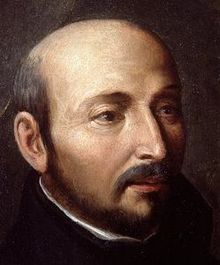Duluth, Minnesota (OpEdNews) January 5, 2025: In the fall semester of 1964, at the age of 20, I transferred as a junior majoring in English to Saint Louis University, the Jesuit university in the City of St. Louis, Missouri. I took my first course from the American Jesuit scholar Father Walter J. Ong (1912-2003; Ph.D. in English, Harvard University,1955).
From Father Ong that semester, I first heard of Albert B. Lord's book The Singer of Tales (1960), Eric A. Havelock's book Preface to Plato (1963), and Dominican Father Victor White's book about C. G. Jung's thought titled God and the Unconscious (1952). I bought a paperback copy of White's book and read it in the summer of 1965.
Thus began my lifelong fascination with the Swiss psychiatrist and psychological theorist Carl Gustav Jung (1875-1961) and Jungian psychology.
In my estimate, Dr. Jung is one of the most extraordinary human beings ever to have lived.
Now, in 2020, W. W. Norton published a handsome seven-volume edition of Jung's handwritten Black Books: 1913-1932, edited by Sonu Shamdasani, translated by Martin Liebscher, John Peck, and Sonu Shamdasani. In Jung's handwritten Black Books, he recorded the fantasy contents of his dangerous self-experiments in which he engaged in what he came to refer to as active imagination.
For a compilation of Jung's various texts about active imagination, see the book titled Jung on Active Imagination, edited and with an introduction by Joan Chodorow (Princeton University Press, 1997).
Now, from the materials he had recorded in his Black Books, Jung then made his far more elaborate Red Book which included beautiful art works that his dangerous self-experiments inspired him to make and elaborate passages written out in beautiful writing known as calligraphy. In 2009, W. W. Norton published Jung's Red Book: Liber Novus (Latin for "New Book") as an oversized beautifully illustrated art book.
Now, speaking generically, what Jung came to refer to as active imagination in his dangerous self-experiments involved freewheeling images called up from his unconscious in a trance-like state.
Now, the centuries-old Roman Catholic tradition of prayer known as lectio divina involved using biblical imagery to meditate and pray. That is, the biblical imagery involved served as a prompt to evoke one's meditations based on the imagery involved.
Arguably the most famous example of the lectio divina practice of prayer and meditation can be found in the Spiritual Exercises of the Renaissance Spanish mystic St. Ignatius Loyola (1491-1556), the founder of the Jesuit order (known formally as the Society of Jesus).
Concerning the form of prayer known as lectio divina, see the Canadian Jesuit biblical scholar David M. Stanley's article "A Suggested Approach to Lectio Divina" in the American Benedictine Review, volume 23 (1972): pp. 439-455. Father Stanley reprinted it as an appendix in his book titled "I Encountered God!": The Spiritual Exercises with the Gospel of Saint John (Institute of Jesuit Sources, 1996, pp. 311-327).
For an English translation, see The Spiritual Exercises of Saint Ignatius: A Translation and Commentary by George E. Ganss, S.J. (Institute of Jesuit Sources, 1992) -- first printed in 1548, according to Ganss [1992, p. 12]), but "probably written around 1525," according to Liebscher (2023, p. xlviii).
For a Freudian account of the life of St. Ignatius Loyola, see the American Jesuit psychiatrist W. W. Meissner's book titled Ignatius of Loyola: The Psychology of a Saint (Yale University Press, 1992).
However, I should point out that Meissner's explicitly Freudian account of how the wounded soldier Ignatius of Loyola was nursed back to health by his beautiful sister-in-law in his brother's family home in Spain involves positing Ignatius's strong sexual attraction to his beautiful sister-in-law. In any event, as his sister-in-law nursed the wounded Ignatius back to health, the wounded soldier was in a childlike condition being nursed and cared for by a mother figure.
Next Page 1 | 2 | 3 | 4 | 5 | 6
(Note: You can view every article as one long page if you sign up as an Advocate Member, or higher).





